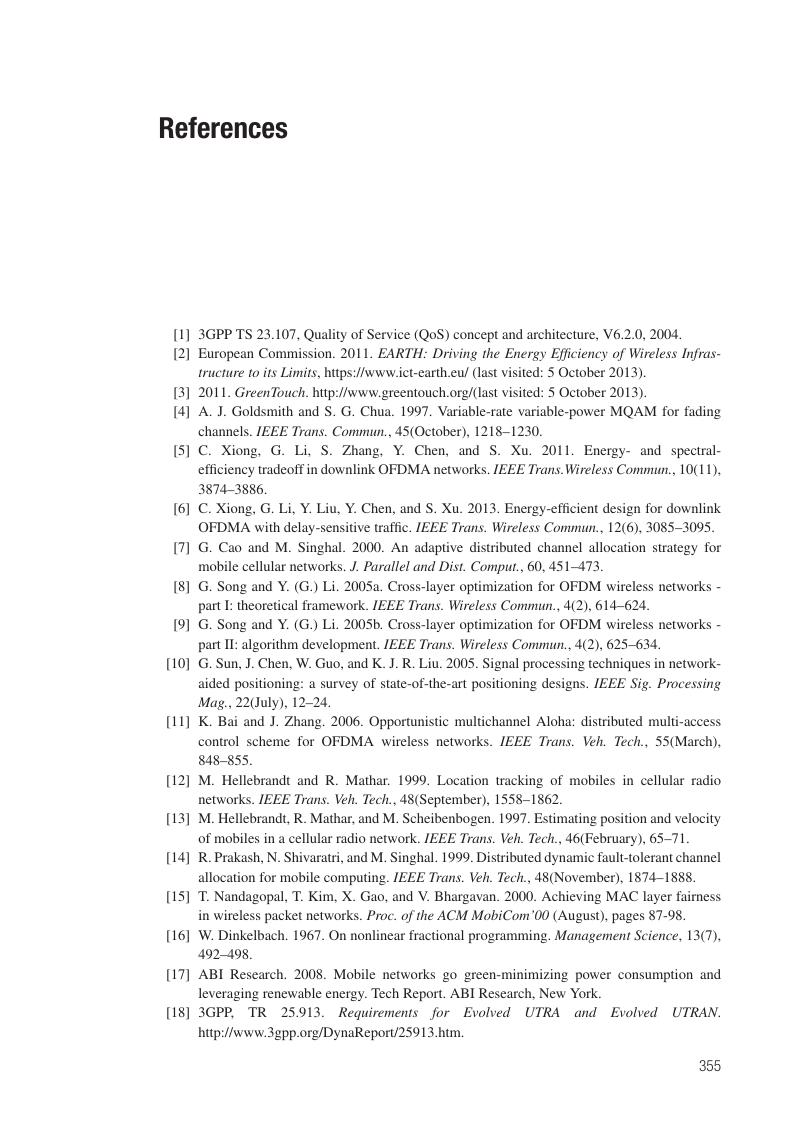Book contents
- Frontmatter
- Dedication
- Contents
- Preface
- Acronyms
- 1 Introduction
- Part I Basic concepts
- Part II Centralized cross-layer optimization
- Part III Distributed cross-layer optimization
- Part IV Cross-layer optimization for energy-efficient networks
- Appendix A Proofs of Theorems and Lemmas
- References
- Index
- References
References
Published online by Cambridge University Press: 05 December 2014
- Frontmatter
- Dedication
- Contents
- Preface
- Acronyms
- 1 Introduction
- Part I Basic concepts
- Part II Centralized cross-layer optimization
- Part III Distributed cross-layer optimization
- Part IV Cross-layer optimization for energy-efficient networks
- Appendix A Proofs of Theorems and Lemmas
- References
- Index
- References
Summary

- Type
- Chapter
- Information
- Energy and Spectrum Efficient Wireless Network Design , pp. 355 - 364Publisher: Cambridge University PressPrint publication year: 2014



